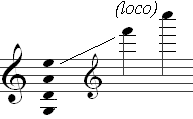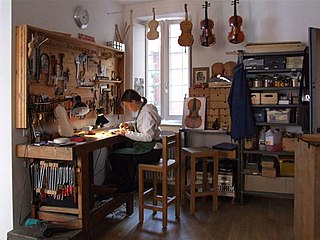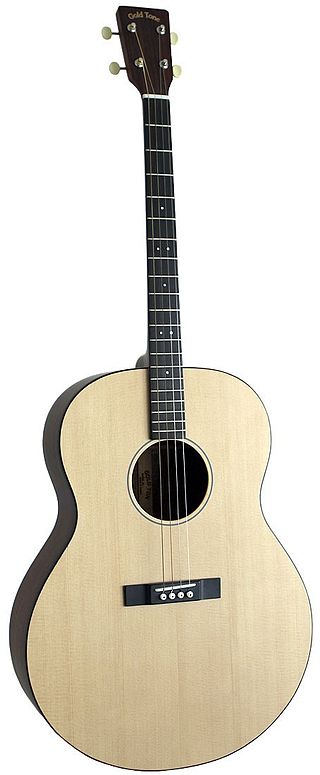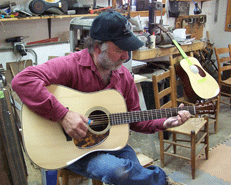The banjo is a stringed instrument with a thin membrane stretched over a frame or cavity to form a resonator. The membrane is typically circular, in modern forms usually made of plastic, originally of animal skin. Early forms of the instrument were fashioned by African Americans and had African antecedents. In the 19th century, interest in the instrument was spread across the United States and United Kingdom by traveling shows of the 19th-century minstrel show fad, followed by mass-production and mail-order sales, including instruction method books. The inexpensive or home-made banjo remained part of rural folk culture, but 5-string and 4-string banjos also became popular for home parlor music entertainment, college music clubs, and early 20th century jazz bands. By the early 21st century, the banjo was most frequently associated with folk, bluegrass and country music, but was also used in some rock, pop and even hip-hop music. Among rock bands, the Eagles, Led Zeppelin, and the Grateful Dead have used the five-string banjo in some of their songs. Some famous pickers of the banjo are Ralph Stanley and Earl Scruggs.

Lyon & Healy Harps, Inc. is an American musical instrument manufacturer based in Chicago, Illinois and is a subsidiary of Salvi Harps. Today best known for concert harps, the company's Chicago headquarters and manufacturing facility contains a showroom and concert hall. George W. Lyon and Patrick J. Healy began the company in 1864 as a sheet music shop. By the end of the 19th century, they manufactured a wide range of musical instruments—including not only harps, but pianos, guitars, mandolins, banjos, ukuleles and various brass and other percussion instruments.

A mandolin is a stringed musical instrument in the lute family and is generally plucked with a pick. It most commonly has four courses of doubled strings tuned in unison, thus giving a total of eight strings. A variety of string types are used, with steel strings being the most common and usually the least expensive. The courses are typically tuned in an interval of perfect fifths, with the same tuning as a violin. Also, like the violin, it is the soprano member of a family that includes the mandola, octave mandolin, mandocello and mandobass.

Rickenbacker International Corporation is a string instrument manufacturer based in Santa Ana, California. The company is credited as the first known maker of electric guitars – a steel guitar in 1932 – and today produces a range of electric guitars and basses.

A luthier is a craftsperson who builds or repairs string instruments that have a neck and a sound box.
Ernie Ball was an American entrepreneur and musician who developed guitar-related products. Ball began as a club and local television musician and entrepreneur, building an international business in guitars and accessories. Ernie Ball Inc. is the eponymous corporation Ball started to market guitar accessories.

The mandocello is a plucked string instrument of the mandolin family. It is larger than the mandolin, and is the baritone instrument of the mandolin family. Its eight strings are in four paired courses, with the strings in each course tuned in unison. Overall tuning of the courses is in fifths like a mandolin, but beginning on bass C (C2). It can be described as being to the mandolin what the cello is to the violin.

The Irish bouzouki is an adaptation of the Greek bouzouki. The newer Greek tetrachordo bouzouki was introduced into Irish traditional music in the mid-1960s by Johnny Moynihan of the folk group Sweeney's Men, who retuned it from its traditional Greek tuning C³F³A³D⁴ to G²D³A³D⁴, a tuning he had pioneered previously on the mandolin. Alec Finn, first in the Cana Band and subsequently in De Dannan, introduced the first Greek trichordo (3 course) bouzouki into Irish music.

The tenor guitar or four-string guitar is a slightly smaller, four-string relative of the steel-string acoustic guitar or electric guitar. The instrument was initially developed in its acoustic form by Gibson and C.F. Martin so that players of the four-string tenor banjo could double on guitar.

The electric mandolin is an instrument tuned and played as the mandolin and amplified in similar fashion to an electric guitar. As with electric guitars, electric mandolins take many forms. Most common is a carved-top eight-string instrument fitted with an electric pickup in similar fashion to many archtop semi-acoustic guitars. Solid body mandolins are common in 4-, 5-, and 8-string forms. Acoustic electric mandolins also exist in many forms.

Semie Moseley was an American luthier and the founder of guitar manufacturer Mosrite.

Wayne C. Henderson is an American guitar maker who specializes in the crafting of handmade, custom acoustic guitars. He also occasionally makes other stringed instruments, such as mandolins, banjos, and fiddles.

Kay Musical Instrument Company is an American musical instrument manufacturer established in 1931 by namesake Henry "Kay" Kuhrmeyer and based in Chicago, Illinois. It was formed when Kuhrmeyer bought out his financial backers in the instrument manufacturer Stromberg-Voisinet. They produced guitars, mandolins, banjos, ukuleles and were known for their use of lamination in the construction of arched top instruments.

Frank Hamilton is an American folk musician, collector of folk songs, and educator. He co-founded the Old Town School of Folk Music in Chicago, Illinois in 1957. As a performer, he has recorded for several labels, including Folkways Records. He was a member of the folk group The Weavers in the early 1960s, and appeared at the first Newport Folk Festival in 1959. He was the house musician – playing guitar and other folk instruments – for Chicago's Gate of Horn, the nation's first folk music nightclub. After many years of teaching, playing, and singing in California he married a third time, and with his wife relocated to Atlanta, where he performs on banjo, guitar, ukulele, voice, and other instruments and co-founded the Frank Hamilton School in 2015.

Elderly Instruments is a musical instrument retailer in Lansing, Michigan, United States, with a reputation as a "megastore", a repair shop and a locus for folk music including bluegrass and "twang". Specializing in fretted instruments, including acoustic and electric guitars, banjos, mandolins, and ukuleles, Elderly maintains a selection of odd or rare instruments. Elderly is known as a premier repair shop for fretted instruments, as one of the larger vintage instrument dealers in the United States, and as a major dealer of Martin guitars in particular.

Casa Del Vecchio Ltda. is a traditional guitarmaking company headquartered in São Paulo, Brazil. Since its foundation by Angelo Del Vecchio in 1902, it has produced a wide range of acoustic stringed instruments. In the 1930s, Del Vecchio began producing resonator guitars, resulting in their most famous model: the Dinâmico,.

Collings Guitars is an Austin, Texas–based stringed instrument manufacturer. The company was founded in 1973 by BillCollings. In addition to acoustic guitars, Collings Guitars manufactures electric guitars, archtop guitars, mandolins and ukuleles.
Joe Veillette, is a luthier and the owner of Veillette Guitars. He specializes in the crafting of unusual and innovative handmade guitars, basses, and other stringed instruments. Veillette's diverse client list includes John Sebastian, James Taylor, Ani DiFranco, Dave Mathews, John Mayer, Jorma Kaukonen, Steve Miller, Todd Rundgren, Tina Weymouth, Chris Martin, Jimmy Vivino, Tim Pierce, Colin Hay, David Torn, Brian May, Kaki King, Neal Schon, Mike McCready, Eddie Van Halen and other notable players.

Tim Weed is a multi-instrumentalist singer-songwriter known for virtuosity on the banjo. Raised a Southern California surfer, Weed learned the banjo at age 17 and played professionally at 18. He was in various bands, and he worked as a studio musician singing and playing electric guitar in the Greater Los Angeles Area. He lived in Japan for a time producing records for Sony-Epic, and he lived on the island of Maui where he rediscovered the banjo. Weed settled in Tucson, Arizona, for eight years, playing in local bands. Working with luthier Dennis Coon he designed and built a seven-string hybrid of banjo and guitar called the "Sevan". He released a solo banjo album: Milagros; in mid-2005 the music was featured on NPR. In 2008 Weed moved to Northern California where he released an album of Americana, world music and bluegrass songs: Soul House. In 2020 he released a classical album, Light and Dark, with the Prague Metropolitan Orchestra. Weed plays concerts and festivals, and he teaches banjo privately.

Following its invention and development in Italy the mandolin spread throughout the European continent. The instrument was primarily used in a classical tradition with mandolin orchestras, so called Estudiantinas or in Germany Zupforchestern, appearing in many cities. Following this continental popularity of the mandolin family, local traditions appeared outside Europe in the Americas and in Japan. Travelling mandolin virtuosi like Carlo Curti, Giuseppe Pettine, Raffaele Calace and Silvio Ranieri contributed to the mandolin becoming a "fad" instrument in the early 20th century. This "mandolin craze" was fading by the 1930s, but just as this practice was falling into disuse, the mandolin found a new niche in American country, old-time music, bluegrass and folk music. More recently, the Baroque and Classical mandolin repertory and styles have benefited from the raised awareness of and interest in Early music.















